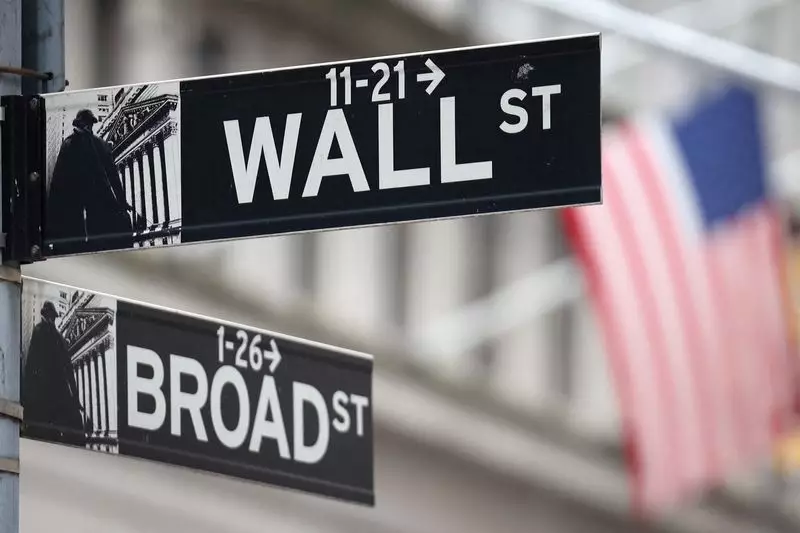In recent trading sessions, the U.S. stock market has exhibited mixed signals, with the venerable Dow Jones Industrial Average managing to extend its winning streak to five consecutive days. However, the broader context reveals a more complex landscape, especially as the Nasdaq Composite and the S&P 500 show signs of stagnation. Despite individual stock performances, primarily those of high-profile technology companies, the overall market environment appears to be grappling with pressure from rising U.S. Treasury yields and lower trading volumes, factors that are quietly reshaping investor sentiment.
A significant factor influencing market behavior lately has been the uptick in U.S. Treasury yields, particularly for the benchmark 10-year Treasury note, which recently soared to its highest point since May, reaching a level of 4.64%. Higher yields are traditionally viewed as detrimental to growth stocks because they increase the borrowing costs for companies, leading to a potential slowdown in expansion plans. Investors reacted to these shifts with caution, which translated into slight dips for the Nasdaq and S&P 500, snapping their recent runs of consecutive gains.
The connection between Treasury yields and stock market performance signifies a crucial interplay in financial markets. As government bond yields rise, risk-free investments become more appealing, often leading to reduced interest in stocks, particularly those in the growth category that rely heavily on external funding for scaling operations. This dynamic underlines the fragile balance that market participants must navigate, reflecting broader economic uncertainties.
Amid these developments, the so-called “Magnificent Seven” technology stocks—those belonging to the upper echelon of U.S. megacaps—hold a significant sway over overall index performance. On a day where the Dow edged up by a mere fraction, it became evident that market outcomes were tightly linked to the collective performance of these industry leaders. Interestingly, while most of these stocks experienced declines, Apple distinguished itself with a modest gain, further validating its position as a giant in the field.
Analysts suggest that much of the recent enthusiasm surrounding technology stocks can be tied to optimism regarding the potential of artificial intelligence to boost profits coupled with hopes for a more favorable interest rate environment. However, the impending reality of fewer interest rate cuts projected by the Federal Reserve is prompting investors to tread carefully, questioning whether these tech titans can sustain their upward movement without broader sector support.
As the investment community reflects on these recent trends, analysts express a cautious optimism regarding the market’s trajectory. Adam Turnquist, chief technician at LPL Financial, highlights that although the Magnificent Seven stocks have demonstrated robust performance, the increasing dependence on these few players raises concerns about sustained momentum. For continued advancements in benchmark indexes, there may be an urgent need for contributions from other sectors—something that has been noticeably absent in recent weeks.
Currently, the markets find themselves in a “Santa Claus rally” period, a time typically marked by a seasonal uptick attributed to low trading volumes and end-of-year financial maneuvers such as tax-loss harvesting. Traditionally, the last five trading days of December and the first two in January have yielded an average gain of 1.3% for the S&P 500, a pattern that many investors remain hopeful will repeat this year.
Despite the typically buoyant December atmosphere, not all sectors are enjoying the benefits. Recent downturns in cryptocurrency-linked stocks indicate an area of volatility, with notable declines following a drop in Bitcoin’s price. Similarly, sectors such as consumer discretionary and energy have also faced pressures, hinting at a broader malaise not entirely confined to tech stocks.
The current market landscape is a fascinating study of contrasts. While the Dow manages slight gains, the broader indices are trapped in a cycle of hesitance, primarily influenced by rising Treasury yields and an over-reliance on a limited number of tech stocks. Investors will be keenly watching how both economic indicators and sector performances evolve in the coming weeks, particularly as the New Year looms, and whether traditional patterns will hold sway. As uncertainties persist, adaptability and strategic foresight will be paramount for navigating the complexities of the financial market.

